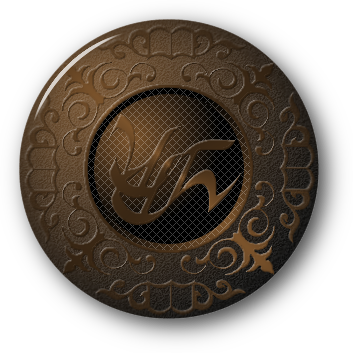

|
|
Similar to articles, demonstrative adjectives this and these, that and those "point to" specific nouns. We know for sure of one demonstrative adjective in D'ni: the word met (met) which is the equivalent of the English this and these. Like re- (re-) or erT- (erth-), met (met) doesn't distinguish between singular and plural; the same word is used for both forms. Placement, though, is a more difficult matter. Source texts show met (met) in a variety of positions, before and after the noun, attached to and separate from it. Some general guidelines for placement have emerged, though. When the noun is not modified by any adjectives, met (met) usually comes immediately after the noun as a separate word. When the noun is modified, met (met) usually comes immediately before the noun as a separate word. There is one special case where met (met) is attached to the beginning of the noun as a prefix (when it is a material direct object) but this is an advanced grammar point we won't learn about for a while.
In addition to being a demonstrative adjective, met (met) is also a demonstrative pronoun. Remember that pronouns are "placeholder" nouns that stand in for other nouns. The pronouns we've encountered already, subject pronouns like I, you, we, and they, are all implied in the personal endings of verbs. met (met) as a demonstrative pronoun is always third person, singular or plural, and stands in for an explicit noun subject. Take for example the two full sentences above. The subjects of these sentences are baxanatE met (batsanatē met) and met Dova pråDex (met dova prådets) respectively. If we replace these subjects with met (met), we end up with:
Note how met (met) is used in both sentences, even though the subject of the first is third person plural, and that of the second third person singular. We can tell whether met (met) is meant to be singular or plural by looking at the personal ending of the verb. Note too that when it is a pronoun, met (met) follows SVO word order and comes before the verb as a separate word. |
Myst, the Myst logo, and all games and books in the Myst series are registered trademarks and copyrights of Cyan Worlds, Inc. Myst Online: Uru Live is the sole property of Cyan Worlds Inc. The concepts, settings, characters, art, and situations of the Myst series of games and books are copyright Cyan Worlds, Inc. with all rights reserved. I make no claims to any such rights or to the intellectual properties of Cyan Worlds; nor do I intend to profit financially from their work. This web site is a fan work, and is meant solely for the amusement of myself and other fans of the Myst series of games and books. |